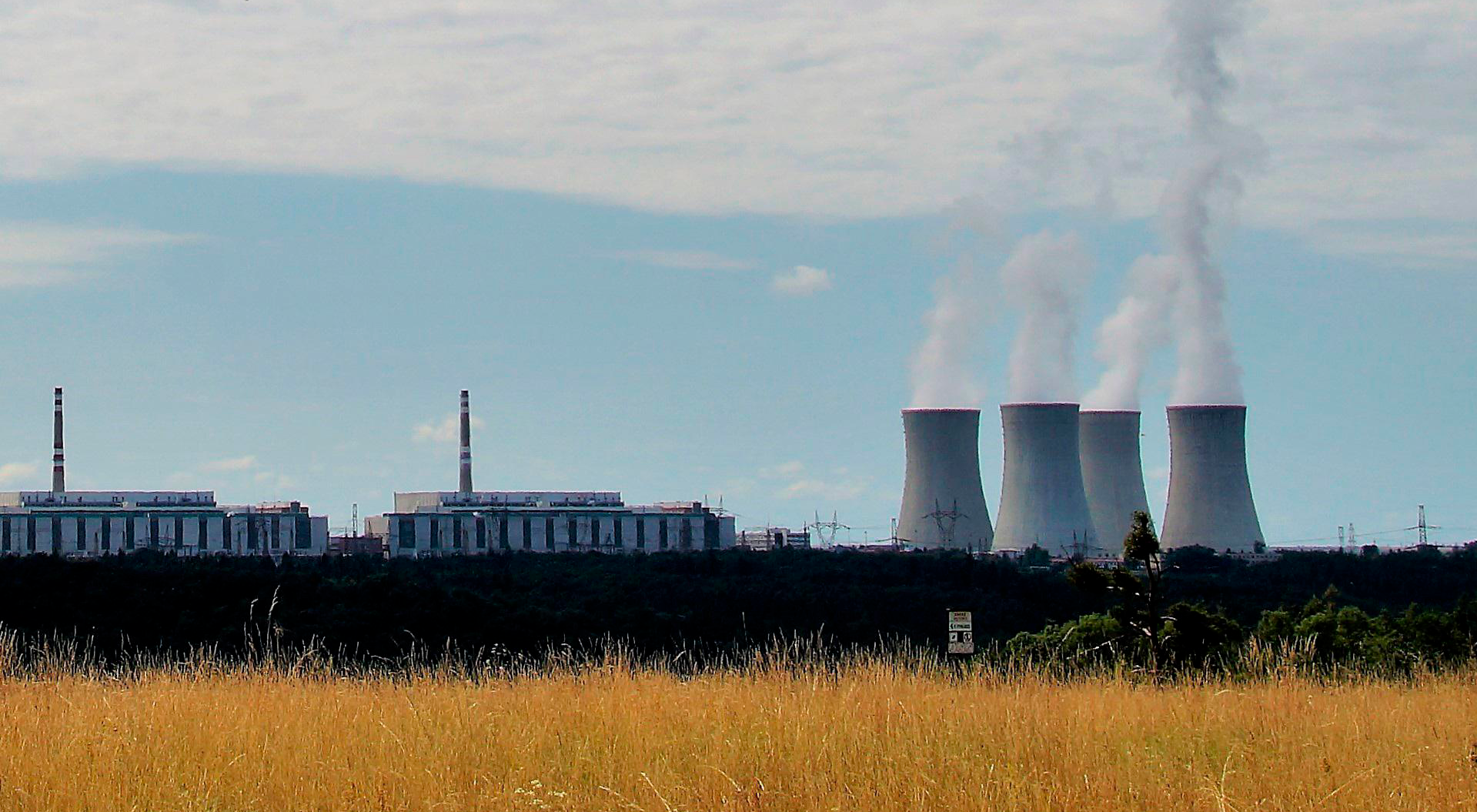
Could nuclear power meet demands for a low-emission stable energy source?
The energy sector has observed a nuclear resurgence driven mainly by two current events. Firstly, governments need to bridge the gap between the current high reliance on fossil fuels combined with net zero CO2 emissions by 2050 commitments derived from the COP26 Glasgow Climate Change Pact. Secondly, governments need to find more stable energy sources as proven by the recent energy crisis where supply chains were disrupted due to the COVID-19 pandemic and the war in Ukraine.
Nuclear power has the potential to solve both of these issues by providing a reliable and low-emission alternative to fossil fuels, especially with the recent advancements in nuclear technology. However, it is a controversial energy source that has significant risks. So, can nuclear energy be relied on to solve global energy concerns?
The Current Status of Nuclear Power
The first nuclear power plant was commissioned back in 1954. Today, 70 years later, nuclear power seems more important than ever, but the risks associated with it so far have prevented it from becoming a more relevant energy source. As of April 2023, there are 420 operational nuclear reactors with a capacity of 375 GW, and 56 reactors with a capacity of 59 GW under construction around the world. Nevertheless, nuclear power only provides 10% of global energy.
The potential of nuclear energy
The main benefit of nuclear power is its emission-free energy production process. Thanks to nuclear energy, there has been a total of 66 GtCO2 avoided emissions in the last 50 years according to the International Energy Agency. While nuclear energy production does result in radioactive waste, its disposal can be controlled to minimize environmental damage which puts its lifecycle emission intensity in line with wind energy – at 12 gCO2/kWh. This is much lower than coal and natural gas energy – at 820 and 490 gCO2/kWh respectively.
As an energy source, nuclear power is more reliable because it doesn’t depend on certain weather conditions like solar and wind energy and has lower cost reliance on raw materials, ensuring an uninterrupted electricity supply.
The drawbacks of nuclear energy
Nuclear power cannot be discussed without recognizing the safety risks which if not mitigated would devastate communities and the environment. The nuclear plant accidents that have taken place – Three Mile Island in the US, Chernobyl in the former USSR and Fukushima-Daiichi in Japan – have made nuclear energy a controversial technology for many years. Governments and populations need to be reassured that new technologies and parameters, such as those outlined by the International Atomic Energy Agency, mean such incidents won’t be repeated for there to be widespread uptake.
For nuclear energy to be a financially viable option, the levelized cost of electricity (LCOE) needs to be considered. There are significant costs involved in the setup and maintenance of a nuclear power station. The biggest burdens are the nuclear commissioning cost, a cost rising with increased security measures, and the decommissioning cost, a fund that is built up over time to cover future disposal requirements, which are on average 15% of the construction cost. These costs have been rising for new projects and have the potential to make the LCOE uncompetitive with other forms of clean energy.
An emerging strategy within the nuclear industry is the extension of nuclear reactors’ lifetimes. In countries like the USA, there is a move towards extending the operational life of nuclear power plants through Long-Term Operation (LTO) programs. These initiatives focus on ensuring optimal reactor conditions, replacing critical components such as mechanical or electrical equipment, incorporating new safety systems, and upgrading plants with modern control systems. By significantly lowering the costs associated with launching new generation facilities, these measures have the potential to offer a competitive levelized cost of electricity (LCOE) for existing plants.
The Evolution of Nuclear Power
Historically, nuclear power has been generated from a process called nuclear fission. This is when the atom nucleus is split into smaller nuclei, releasing energy. Nuclear fission is an established technology and is used worldwide for energy generation in power plants and is experiencing innovations that make nuclear power an even more favorable choice.
Alongside traditional nuclear power pathways, nuclear fusion has emerged as a promising alternative for energy production. This is when two or more nuclei are combined to form a larger nucleus, releasing energy. Fusion holds great promise for an almost unlimited generation of clean energy, but achieving a sustained controllable fusion reaction still faces multiple challenges.
Innovation in nuclear fission
The nuclear fission process is being improved with new-generation reactors allowing the use of new fuel resources such as plutonium, unenriched uranium, and thorium. This makes the traditional method for nuclear energy generation safer and more efficient due to benefits such as decoupling from the uranium market through waste re-utilization. A type of fuel of particular interest is Tristructure Isotropic (TRISO) fuels. Its encapsulated structure increases its safety prospects, allowing the use of higher enrichment levels which, in turn, provide longer lifespans, leading to lower core replacement requirements.
The high capabilities and low footprint of Small Modular Reactors (SMRs) and microreactors could further the wide uptake of nuclear power. SMRs, known for occupying a relatively small footprint, align closely with the future requirements of the energy sector. By downsizing nuclear reactors, these innovations can not only be produced en masse but also offer flexibility, making it significantly more convenient to harness nuclear energy and the technological developments that are on the horizon. Better infrastructure for high-level waste management is also being developed to support fuel reprocessing. Methods such as PUREX, pyroprocessing, and transmutation are being explored alongside new licensing for deep geological repositories as disposal sites. These would reduce the radioactive waste concern by giving it a second life or safely storing it underground.
A growth in nuclear power also requires a modern licensing system that supports innovation while maintaining safety. New review processes are being developed such as the Nuclear Energy Innovation and Modernization Act (NEIMA) in the US and the Generic Design Assessment (GDA) in the UK. These infrastructure advancements both optimize safety measures while easing implementation through shorter approval periods, which currently can take several years.
Nuclear fusion outlooks
Nuclear fusion, capable of releasing almost four million times more energy than equal amounts of oil, gas, or coal, has consistently garnered interest. However, significant technical challenges persist in achieving fusion energy production, including plasma confinement, attaining net energy generation, and adapting electricity conversion systems.
There are technologies in the development stage that could make nuclear fusion a reality, namely Magnetic Confinement Fusion (MCF) and Inertial Confinement Fusion (ICF). However, so far these advancements have only been able to maintain the fusion reaction for a few seconds, so continued development is required before a reliable nuclear fusion energy solution can be rolled out.
This has triggered both private and public investment. The International Thermonuclear Experimental Reactor (ITER) has been in development since 2007 and is supported by an intergovernmental organization including China, the European Union, India, Japan, Korea, Russia and the United States. If successful, the ITER Tokamak will be the largest and most powerful fusion device in the world. Undeterred, several startups race to create a prototype first with startup funding ranging from $200M to over $1 billion.
One thing is for certain and that is the energy sector has to change. As fossil fuel consumption decreases, other energy sources need to fill the gap and keep up with an ever-increasing demand for electricity. While nuclear power has been restricted to the sidelines, this could be the accumulation of circumstances needed for its rapid growth.
Concerns around climate change and supply chain stability combined with technological advancements that make nuclear energy generation more convenient, efficient, safe, and sustainable than ever before position nuclear power as a viable forerunner for the future of energy. That is not to say that the technology needed for virtually unlimited, clean, safe, and affordable energy has already been mastered.

Román Cruz
Business Senior Consultant

Guillermo Burillo
Business Senior Consultant






